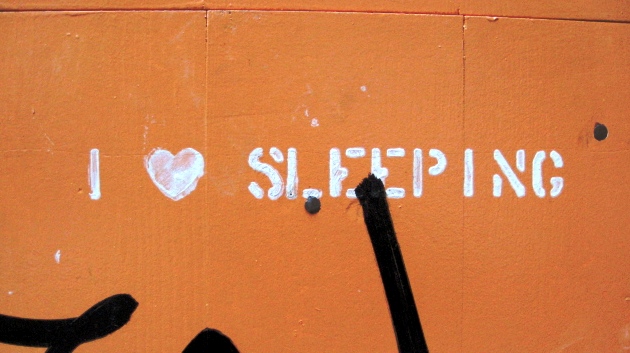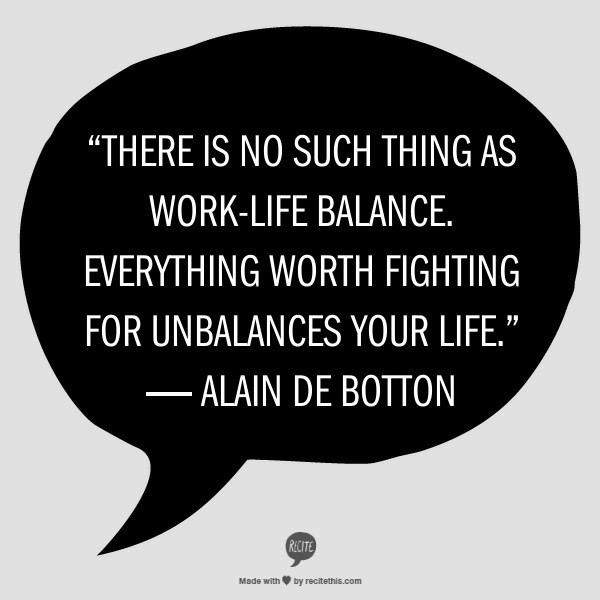
by Deirdre | Aug 16, 2013 | Mindful living
“A good laugh and a long sleep are the best cures in the doctor’s book.”
-Irish Proverb
Our bodies have a lot to tell us about what’s going on with our lives. If we can still ourselves and learn to read the messages we have a tremendous ally in unwinding the difficulties of our life. It’s just that sometimes, in the busyness of our days, our bodies need to raise the volume to break through.
The story our sleep has to share with us is a particularly powerful ally. It’s one of the clearest stories we have. We can’t use our willpower to change how our body reacts to our desire to sleep. If we’re awake at 2 in the morning, we’re awake.
I posted a few weeks ago about sleep (click link) as the first part of what insomnia might be trying to tell you. In this post we’ll dive deeper into the messages.
But first a caveat – there are a number of forms of sleeplessness that can be managed with the help of your doctor. If you feel like you sleep through the night, but don’t feel refreshed in the morning, check first with the people you live with. There may be something they can share with you about your sleep habits.
If a housemate complains about your obnoxious snoring then it’s time to talk to your doctor about sleep apnea. There are new therapies in this area that are much less intrusive. Narcolepsy (falling asleep during the day), sleep terrors (like sleep-walking), and REM behavior disorder (vigorous movement when you’re dreaming) will also be evident to observant people around you.
If you’re painfully aware of your lack of sleep then it’s most likely that you’re dealing with plain ‘ole vanilla insomnia. What you’ll notice is that you either have trouble falling asleep or you wake up in the middle of the night.
Angela Hobbs has written an excellent book about all the factors that work against getting a good night’s sleep. She has laid out the subtle sleep irritants that are so engrained in modern life that we don’t even see them anymore.
You can’t fall asleep
Your body doesn’t think it’s time to sleep until your cortisol levels drop down and your melatonin levels rise. If your cortisol is high, then you won’t achieve that “cross over” and you’ll be lying awake until it happens.
Angela calls this a bad night of good sleep. The good news is that when you do nod off you are cycling through all the levels of sleep that repair your body and build your brain. The bad news is that your alarm is ringing before you’ve gone through enough of them.
Your mind re-sorts and organizes the events of the day and lays them into memory during the REM sleep of later cycles. Those are precisely the ones you’re running short on. During the day you may find that your mind is disorganized and you are less productive. You have more problems with memory or absorbing new skills because your brain isn’t integrating your daily learning into solid neural patterns.
There are two reasons this may be happening:
- You’re not be giving yourself enough time to wind down for sleep. Be kind to yourself and unwind your day earlier!
- You may be a night owl. We each have our own rhythm of life and we operate best when we can follow it. Our perfect morning wake-time is hard-wired and there’s nothing we can do to change it.
You sleep lightly and toss and turn
Angela calls this a good night of bad sleep. You are having the evening and morning hormone crossovers, so you are falling asleep and waking at a reasonable time. But you are close to wakefulness for a lot of the night and small disturbances will bring you back to consciousness. During the day this will show up as a lowered immune system because you’re not getting to the deep, restorative levels of sleep.
Reason: All too many
If there’s light in your room and your melatonin levels aren’t high then your body temperature may stay higher and you won’t drop into the deeper sleep cycles. If you chronically stressed then your cortisol may not lower enough to drop you down into deep sleep. The hormones crossover, but your cortisol level doesn’t dip as low as it used to and your melatonin level isn’t as high as it once was. There may be disturbances in the environment, like noise, light and electrical signals that excite your nervous system and prevent deep sleep.
If you wake up for longer periods in the night, that is a different kind of insomnia called psychophysiological insomnia. You may have a tendency to worry or be very aware of “dangers” in your environment. Something may have happened recently that is causing you more stress than usual. And then you worry about whether you’ll get to sleep and stay asleep. In a sense, you have trained yourself to have a bad night’s sleep in your own environment.
There are a few tip offs if this is happening to you. You’ll find that you can’t turn the worry off regardless of what you say to yourself. The worry train comes along and you can’t help yourself to stay off. You find that your muscles are stiff during the day and you get headaches easily. But most importantly, you can sleep well in other situations, like the living room couch or a hotel room.
Here’s what you can do
Practice some hormone balancing routines in the morning and evening.
- First thing when you wake up, get as close as you can to some sunlight. Stand by the window and soak up the sun or go outside for a walk. Getting light to your pineal gland will turn off the production of melatonin and set you up for a normalized hormone cycle for that night.
- In the evening develop some specific self-soothing routines to drop your cortisol level lower before you go to bed. Close down the electronics by 9 pm, start turning off the lights and do something peaceful for two hours before you turn in.
- Take a brisk walk after dinner and before you start your soothing routines. This will help lower the cortisol built up during the day.
- If you try this and start to fall asleep within 10 or 15 minutes, case closed. If not, your natural circadian rhythm may be different from what how your life is arranged and you’ll discover that you’ve been fighting it for years. But that’s a story for a different day.
Posted by Deirdre Walsh
Image: I Love Sleeping by bixentro. Licensed under Creative Commons
If you enjoyed this post, please share it with your friends!

by Deirdre | Jul 19, 2013 | Mindful living
I learned something new last week – about joy.
For a long time I thought joy was kind of cracked-out bliss state, felt regularly only by a certain kind of trusting, slightly delusional, type of person. Not to say that I don’t know joy. I’ve definitely had moments of joy and everyone I know has had moments of joy. But the regular, on-tap experience of joy seems rare.
Then I went to the World Domination Summit in Portland, Oregon. WDS is described as a gathering place for people who want to live a remarkable life in a conventional world. The name is a bit over the top and I was concerned that I’d be lost in a sea of self-aware hipsters. But I was willing to take the chance for something that was intriguing. And I’m glad that I did because what I found was an incubator for joy.
What is joy?
In traditional Chinese medicine, joy resides in the heart. It is the emotion of the summer, where the energy and warmth of the sun makes plants expand, blossom and reach for the sky. When we feel joy we radiate the warmth of our heart. We feel light and buoyant with an aliveness that moves though our bodies.

As I enjoyed the presentations at WDS, ran into my online heroes, and listened to the dreams of fellow attendees, joy was there to stumble on at every turn. People vibrated with the warmth and expansiveness of joy. The kind of joy that comes from being grounded and light, all at the same time. From letting the music of life play through you.
Joy is there in those moments when you make a heart-to-heart connection. When you see something that no one else can see and you make it happen. When you express and receive love, care, and gratitude. It’s those moments when you are fully who and what you are meant to be.
Some seriously joyful people
The conference opened with Nancy Duarte – a goddess of storytelling if there ever was one. (A friend of hers claimed that she printed out THE INTERNET to find the patterns of story). I was thrilled to meet her because she helped my son find his joy – presenting onstage. When he was 11 he re-read her book about a hundred times, absorbing her joy and transmuting it into his joy. She was kind enough to write him a note of encouragement.

Jia Jiang has lived out our deepest fear in the last 100 days with his project to get tougher with rejection. He shared how he set up 100 situations to ask a stranger something unreasonable to get rejected, on purpose. He says that rejection is like chicken. Yummy or yucky, depending on how you cook it. What was most surprising is that he has been rejected only a handful of times and some of the things he’s asked about are pretty outrageous (like pulling over a policeman and asking to drive his car!)

Bob Mills, of whole grain fame, shared his joy of putting people first in his business. He’s 84 and still running his grain milling business near Portland. In the last few years he ceded ownership of the company to his employees, some of whom have been working with him for 20 or 30 years. His joy in sharing abundance with others was palpable. His tip for an abundant life? If you want something to show up in your life, put it on a list and forget about it.
I felt a pang of joy when Dyana Valentine, who I’ve admired from afar, popped up beside me at a book launch party. She radiated shiny, welcoming love and sent me on a mission to bring that joy upward in the world. I suspect she gives that mission to many.
Then there were the people I’d meet in line-ups or the elevator who turned out to be doing incredible things. A woman I chatted with in line for a burger has raised over $30K for to drill water wells in developing countries by spending her birthday swimming from San Francisco to Alcatraz naked. Like, without a bathing suit. A man I startled in an elevator is sailing around the world by himself to entertain-teach kids about the world. A young woman I shared a cab with is reaching out to teens about her (former) addiction issues to save them the suffering she went through. All of them creating something out of their joy.
Getting some joy for yourself
Getting more joy for yourself is simple, just not automatic. Our brains are hard-wired to notice the negative in life. We don’t see the positive that’s springing up around us constantly. We structure our lives to placate our fears instead of cultivating our love.
What I learned from the amazing people I met is that you need to create the conditions for joy in your life. Structure your life so that you become the hero of your own story. It doesn’t mean that you don’t feel fear, regret, sadness, discomfort or any of the other perfectly normal emotions of life. It just means that you get to feel joy, too.
When I’m not feeling the joy I turn to my mindfulness-crush, Rick Hanson. Here’s an excerpt from his book, Just One Thing, on excitement:
Excitement is energy plus positive emotion, and it is part of joy, passion, and having fun. Find something that excites you, even just a bit. Feel the enjoyment in it. See if you can intensify the experience through a quick inhalation, a sense perhaps of the energy rising in your body. Lift your chest and head, and let more aliveness come to your face. Register this feeling of excitement, and make room for it in your body. Then as you go through your day, notice what moves your own thrillometer, particularly in subtle ways. Look for things to get excited about!
Posted by Deirdre Walsh
Images: Chris Gillebeau. Licensed under Creative Commons
If you enjoyed this post, please share it with your friends!

by Deirdre | Jun 21, 2013 | Mindful living
“A good laugh and a long sleep are the best cures in the doctor’s book.”
-Irish Proverb
I’m always surprised by how many people confess to sleep troubles when they hear I’m a health coach. If you feel that you’re the only one awake at 2 in the morning, I can assure you that you are not. You are pinpoint of restlessness in a galaxy of sleeplessness. Some of the other pinpoints are catching up on social media, some are reading, but a whole lot of them are worrying.
We’ve all heard the standard advice for what’s known as sleep hygiene. Go to bed early (really?), turn off all electronics by 8 (as if), avoid coffee and alcohol for six hours before bed (hunh?) The name alone is a bit of a horror. It’s not often that we talk about “hygiene” unless there’s some unpleasant, odorous reason to.
I always find it useful to understand “why” before I commit to making a change – what the science is behind the suggestions. I want to filter out the “in a perfect world” advice and get right to the “least effort possible” stuff. I like curling up with my iPad and a glass of wine to wind down and there better be a damn good reason why I would give that up.
How Does Sleep Work?
Sleep has it’s own rhythm throughout the night. There are five stages that cycle together in different combinations.
- Stage 1 of sleep is short and sweet – your muscle activity and eye movements slow down.
- Within 5 – 10 minutes you reach Stage 2, where body temperature drops, heart rate slows and your body prepares for deep sleep. Stage 2 is a gateway in and out of deeper stages of sleep. You spend about half of your sleep time in this stage.
- During stages 3 and 4 your body uses available human growth hormone to repair and do growth work.
- Stage 5 is the dream stage. Your body paralyzes your arm and leg muscles and then sorts through thoughts, memories, and knowledge and files them away.
A healthy person sleeping in a healthy location passes through five or six complete cycles lasting up to 90 minutes each. The earlier phases are deeper and longer. Your body uses these cycles to dispatch the hormones that restore and repair your cells. As the night progresses the cycles shorten and you start to dream more as your brain processes the mental activity of the day. This is when you get smarter.
The Rhythm of Sleep
There are two hormones – cortisol and melatonin – that work together in a rhythm to set the stage for sleep. In that imaginary perfect world, the times when one hormone is high, the other is low. Their levels cross over twice – at night to send you to bed and again in the morning to push you out. Cortisol, the action/stress hormone, peaks in the morning when melatonin has almost disappeared. This tells your brain to jump out of bed and get your day started. At the other end of the day, melatonin, the sleep hormone, rises as cortisol drops. When melatonin is higher in your system than cortisol your bed starts looking very appealing.
So what happens when this beautiful rhythm is interrupted by this thing we call “normal living”? The first step in approaching a problem is to understand what the problem is. You can try this quiz to see how your sleep might be disrupted. So many of us live with “disordered” sleep that we’ve forgotten what a good night’s sleep is like. This quiz will help you be clear on the different messages your sleep is sending you.
In a follow-up post I’ll cover a few scenarios of unsatisfying sleep and what they might mean. There’s a whole lot of information coded into when you fall asleep and when you wake up. The first step is to be mindful of where the problem lies.
Sweet dreams!
Posted by Deirdre Walsh
Image: I Love Sleeping by bixentro. Licensed under Creative Commons
If you enjoyed this post, please share it with your friends!

by Deirdre | May 10, 2013 | Mindful living
But of course there are all different kinds of freedom, and the kind that is most precious you will not hear much talk about much in the great outside world of wanting and achieving and displaying. The really important kind of freedom involves attention and awareness and discipline, and being able truly to care about other people and to sacrifice for them over and over in myriad petty, unsexy ways every day.
~~ This Is Water: Some Thoughts, Delivered on a Significant Occasion, about Living a Compassionate Life (2009)
Two ideas popped up this week that ended up being the same idea brought to life by two very different people. The message from both was simple and profound – peace and contentment are a moment’s choice away.
The first messenger was a bright, shiny, funny client – the best kind of girl that New Jersey can deliver. She’s got that sharp, sardonic kind of wit that signals a close proximity to Manhattan. We were catching up on life when she delivered her killer observation:
I realized that boring and peaceful are just a tiny shift in perspective away from each other.
Boom. Truth delivered in one wise sentence.
Those of us with restless minds and spirits can get caught up with the next new idea; how we’re going to do what we do, but better; or what untold possibilities lie just beyond what we know of our life right now. We secretly admire those who throw over their lives to follow their passions. But what we can miss out on is the beauty that exists in the moments that we’re rushing past.
This same idea, packaged in a very different format, also pinged me on Facebook. A video is circulating that captures the main thoughts of a commencement speech written by David Foster Wallace in 2005. In his speech Wallace, an American novelist, doesn’t lean on the promise of youth, energy or potential to prepare the students for life in the “real world”. Instead he offers the hope of a man who has struggled intimately with his mind.
Wallace talks about the tedium of living with the frustration and routine that makes up most of our lives. He makes it clear that he has lived the boredom, misery and darkness that our minds can default to if we’re not careful. (There’s a sense of the depth of his struggle in the entire speech that is not fully captured in the video. )
He makes the case to choose differently.
http://www.youtube.com/watch?feature=player_embedded&v=xmpYnxlEh0c
Now, this is some pretty advanced homework, so take it easy on yourself as you consider taking it on. It’s a case of retraining your brain to see the good in life, rather than seeing the muck. And your brain doesn’t want to be retrained, thank you very much.
As Wallace says, “It takes will and effort, and if you are like me, some days you won’t be able to do it, or you just flat out won’t want to.” But the patience and kindness you apply to this will start to lessen the loneliness and pain of those crummy moments in the hot, crowded line-ups.
Posted by Deirdre Walsh

by Deirdre | Apr 30, 2013 | Mindful living
I was talking to a small group about how to maintain balance in our lives. I tossed off the line “your balance is where you say it is” when they seemed concerned that they were somehow missing the mark. I was struck by how quickly faces relaxed, shoulders dropped and smiles emerged. They seemed to say “you mean I don’t have to be a different person?” and “I don’t have to have different goals?”
Balance, Like Beauty, is in the Eye of the Beholder
Some people thrive on work and don’t understand why the rest of us are such slackers. For others, the amount they need to work to maintain their lifestyle causes them to compromise what they consider a life. Some people refuse to be balanced. What they do instead is plan for burnout at the end of her big projects. Jonathan Fields, in his book Uncertainty, creates oases of rigid routine in his home life when he’s in the chaos of creating at work.
There have been a lot of words typed and ink spilled on this topic and many of them tiptoe very close to being judge-y. An epic amount of mental energy went into evaluating Sheryl Sandberg’s take on this subject. I appreciated that she sharing her wisdom on what it takes to get to the upper echelons of the corporate world but, frankly, it’s not a path most of us are on, male or female. What is fascinating is the amount of heat that this discussion can generate.
I sometimes wonder if people think that my regard for mindfulness means that I’m trying to push some kind of “unicorn dancing in the fields” version of work-life balance. Or that it’s a mark of your character when you’re calm, on time, fulfilled, engaged and charmingly available at all times. I assure you that I’m not.
Know When You’ve Hit Your Edge
You can ask anyone who knows me well – I am no poster child for balance, either in practice or belief. What I do firmly endorse is to know when you leave your own point of balance and start to lean on your stress crutches. And this is where the gift of mindfulness bears fruit. With a consistent-ish practice of mindfulness you start getting aware of the messages of stress. Maybe your sign is impatience or cravings, or maybe a tightness in your body, perhaps a change breathing patterns. My wake-up call is exactly that — I wake up with rapid breathing, already feeling the pressure of the day on me before I leave my bed.
Here are a few body messages that people have identified as their call for some serious TLC:
- Suddenly craving a lot of sweet things – or “needing” something sweet or mood-altering to get through
- Awake at 2 in the morning, worrying about the load of the next day
- Not being able to remember things from conversations, where you left things, why you went into that room
- A jump in worrying or feeling helpless to take action on the things that are troubling you
Quiet your mind for a minute. Check in with your body right now. What is it for you? What is your body trying to tell you about your life?
Posted by Deirdre Walsh

by Deirdre | Apr 2, 2013 | Mindful living
Relax . . . . we’re all crazy . . . . it’s not a competition
~~ an inspirational moment on Facebook
We’re all crazy sometimes. Stress does that to you. In my fantasy reality show, Dancing With The Stress, I lovingly call it “being on the crazy train.” Genetically speaking, and with a lifetime of stress-inducing choices and experiences under my belt, it’s not surprising that when I’m stressed my reaction to things can veer towards the “dramatic”.
The crazy train is your body’s way of talking back to you about the load you’re piling on it. First, you have the heady mix of expectations you heap on yourself. (You know what I mean.) That’s the engine that drives the train. I know that it’s not that you want to be Superwoman. But you care and want to share the goodness that’s come your way.
Then add in the physical stressors of being in too many places at once, with too many competing demands. It can be too much for our body and brain. They need to make us crazy to get us to pay attention! Or at least make us crazy enough that our loved ones will stage a stress intervention.
Being on the crazy train gets in the way of all the fun stuff of life
I’ve been on and off the crazy train since I started travelling a lot for work in my early ‘30s. Of course, I didn’t recognize it as the crazy train. I thought it was a normal response to working 70 hours a week. Honestly, self-care in those days meant grabbing some fast-food instead of starving.
I like to think the crazy train has seven stops. Why seven? Don’t know. I just like that you’ve got four stops to get off before you’re well on your way to crazy town.
The crafty thing about the crazy train is that you’re not sure you’re on it until you’re nearing the end of the line. It took me until I was way cray-cray (as my daughter says) for the penny to drop – something about convulsing in sobs to a friend because I didn’t have cookies to bring to a party.
Making all seven stops to crazy town for me means melting down at the slightest thing. It’s being sensitive to sound. It’s being really in tune with the voice of fear in my head. It’s taking a small thing – and I mean small – and projecting out how it can singlehandedly destroy my life.
Oh, and don’t think it’s only women who ride the crazy train. I heard a story about a senior manager – a male – who was working such insane hours for so long that he developed a very strong territorial attachment to his office copier and sent threatening emails to co-workers if they were thinking about using it. That’s way cray-cray.
Staying off the crazy train means recognizing when you’re on the crazy train
My reality check that I’m too far along on the crazy train is that look in a girlfriend’s eye when I’m telling her about the latest complication in my life. That look where she’s questioning my sanity and slowly backing away – in a loving, kindly way of course.
As I’ve gotten attuned to the signs at each of the stops of the crazy train I can ring the bell and exit the train faster. When I sense the symptoms – anxiety, restlessness, worry – I know they have more to do with my stress levels than they do with reality. Mindful practices have helped to raise my awareness and then I can get into action with sleep, diet and exercise. I call them the four pillars of stress resiliency – I’ve written about them here.
Posted by Deirdre Walsh
If you enjoyed this post, please share it with your friends!








